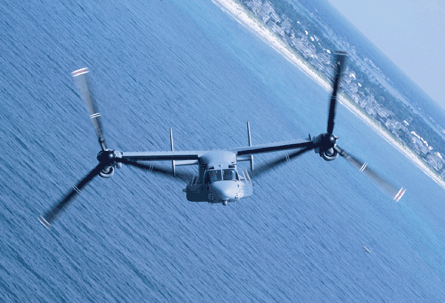Top industry officials are divided over what requirements the US Army should set for its nascent future vertical lift (FVL) programme. The service intends for the aircraft to become the centrepiece of its modernization efforts in the 2030s.
While some like Bell president John Garrison and Sikorsky's military aircraft president Mick Maurer are championing newer concepts like the tilt-rotor or high-speed compound helicopter respectively, others like EADS North America CEO Sean O'Keefe are calling for an 80% solution. The executives spoke at an Army Aviation Association of America forum in Nashville, Tennessee.
Garrison says that a second-generation tilt-rotor would be the ideal candidate for a new FVL aircraft. The company has teamed with Boeing to offer such a concept under the joint multi-role (JMR) programme, which has now been rebadged as FVL.
Garrison says that the conventional helicopter has reached the maximum extent of its technological development, but tilt-rotors are comparatively new and thus there is room for further growth. He prominently displayed a rendition of what such a machine might look like.
 |
|---|
Maurer says that the most important task for the army and US Department of Defense at large is to define the requirements for the FVL. But the company already has some ideas based on its X-2 compound helicopter technology, he says. He showed off a chart with various size classes for a dual-rotor, pusher-propeller FVL type aircraft that might be used by the army and US Navy.
Meanwhile, Boeing's Leanne Caret says that the company--which is offering a JMR concept by itself in addition to the Bell-Boeing tilt-rotor team-is looking at various different concepts to try meet the army's need for greater speed and increased range.
But Sean O'Keefe of EADS, says that the army and DoD tend to plan for massive leap-ahead efforts while stretching the existing fleet to the breaking point. When that platform is inevitably late or cancelled, the existing aircraft need to be further extended. The cost of those delays and service life extensions are often equivalent to or greater than buying an interim solution that offers an "80% solution". Indeed, if the army could be satisfied with toned down requirements, that interim 80% solution could be a permanent solution.
At the same time, William Lewis, director of US Army Aviation Engineering Directorate, says that the government has it own team of engineers exploring various concepts for FVL. He says the speed and range requirements for the new FVL concepts mean that designers can not hang sensors and weapons onto the next-generation aircraft without taking into account drag-the new aircraft are likely to be far more aerodynamically slick than existing rotorcraft.
Right now, only the army has invested any cash into the FVL, but Lewis says he expects the US naval services to do so in time. The USN is not drawing up a whole new set of requirements, but adding new features to the existing ones to make the aircraft suitable for their needs, he says. Part of the problem for the Department of the Navy is the disparate needs of the US Marines and USN.
The US Air Force is also involved in the project.
Source: Flight International
















